
Maternal Fitness Expert at BabyFit.com
Catherine Cram, M.S., is the author of Fit Pregnancy For Dummies, and the owner of Comprehensive Fitness Consulting, LLC. Catherine’s company specializes in providing prenatal postpartum fitness information to health-care professionals. The resident maternal fitness expert on our sister site, BabyFit.com, Cram blogs monthly on the topics of menopause and women's health.
Read More of 's Blogs:

How to Treat Post-Menopausal Hair Loss
If you're a post-menopausal woman, you might have noticed that your forehead has grown higher all of a sudden. Or maybe the part in your hair has gotten wider, and you can see your scalp when the light hits it just right. But don't worry; you're not alone. Up to 10% of pre-menopausal women experience some androgenetic alopecia (decreased hair diameter with a normal growth pattern), and the rate jumps considerably to 50-75% of women 65 and older.
The cause of this type of hair loss isn't fully understood, but some studies point to factors such as hormonal imbalances, iron deficiency, rapid weight loss, medication side-effects and some disease states. For any woman who is experiencing hair loss, the first step is to consult with a healthcare professional who can rule out any physical conditions that may be contributing to the hair loss, followed by a proper treatment plan.
Posted 9/26/2012 10:00:00 AM By: : 43 comments 173,114 views
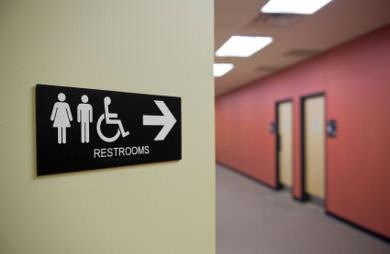
Easy Ways to Overcome Incontinence
Let's face it: Nobody wants to talk about incontinence. However, many women have some degree of it. There is no reason why anyone should have to feel embarrassed about or continue to suffer from this problem, but it continues to be a common chronic health condition that diminishes quality of life.
Many women experience urinary incontinence for the first time during or after pregnancy. The physical changes of pregnancy, along with the stresses put on the pelvic floor, can cause urine leakage with exertion, coughing or sneezing. For many women, this problem resolves within several months postpartum. However, without treatment, some women may continue to have a chronic incontinence issues for life.
There are two main types of urinary incontinence, listed below. Some women develop a mix of the two.
Posted 8/15/2012 10:00:00 AM By: : 45 comments 47,045 views
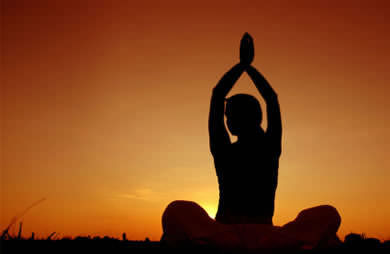
Tai Chi: Relaxation Technique and Weight-Loss Aid
Tai Chi has become an increasingly popular form of exercise for all age groups, but current research has shown how it can be especially beneficial for older individuals. This graceful sequence of gentle, flowing movement combines physical postures with mindful focus, making it a great fit for those who find other forms of exercise too strenuous.
But Tai Chi isn't only used for relaxation purposes--it may also be a useful exercise for those working toward weight loss. In a study that observed obese postmenopausal women, the subjects that participated in three 45-minute Tai Chi classes a week lost similar amounts of body fat as the diet-only group, but maintained greater muscle mass (meaning that the group lost less muscle or fat-free mass as a result of dieting).
Posted 7/5/2012 10:00:00 AM By: : 69 comments 48,572 views

Stand Up for a Healthier You
I recently discovered The First 20 Minutes, a new book by New York Times columnist Gretchen Reynolds. The book offers some simple advice that almost everyone can use to get fit. One of the most interesting tips the author suggests is directed toward those of us who spend our work time tethered to a desk. She says that standing up for two minutes after 20 minutes of sitting can have an impressive impact on how the body functions. Research has shown that prolonged sitting is associated with many detrimental changes in our body, including reduced fat metabolism and muscle function, and increases our risk of sedentary lifestyle-related diseases.
Posted 6/13/2012 10:00:00 AM By: : 26 comments 25,445 views

You Snooze, You Lose: Sleeping More Could Help You Weigh Less
We all know how important quality sleep is to our health, but most of us tend to get less of it as we grow older. Stress, lifestyle issues and the hormonal fluxes of menopause can all disrupt our sleep quality and quantity, and the effects may be more far reaching than just leaving us feeling tired.
New research has explored the relationship between sleep and weight, and there's compelling evidence that people who don't consistently get seven to eight hours of sleep a night may be at a higher risk for weight gain. A review of the literature that focused on sleep and weight studies found a relationship between short sleep duration and increased weight over time. The relationship was strongest for children, an interesting finding in light of the childhood obesity problem in the US. The Nurses Health Study found that women who slept less than five hours a night gained more weight over a 16-year period than women who slept seven hours, and these findings weren't affected by adjustments for physical activity or dietary consumption. Although the increase was considered modest (1.14 kilogram), it's still a significant finding.
Posted 5/9/2012 10:00:00 AM By: : 54 comments 37,901 views
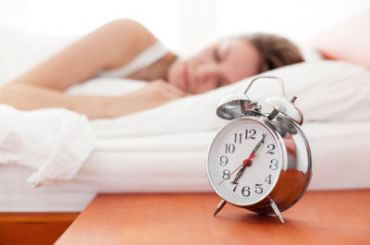
9 Tips to Sleep Better Tonight
If you're having a difficult time getting seven to eight hours a sleep a night, it's a good idea to talk with your healthcare provider about options for improving your quantity and quality of sleep. Some women find that making changes in their sleep hygiene--a fancy phrase for good sleep habits--can make a big difference in getting a good night's sleep. Here are several tips for better shut-eye:
Posted 4/11/2012 10:00:00 AM By: : 18 comments 22,799 views

Can Lowering Your Thermostat Raise Your Metabolism?
You may want to think twice about turning up your thermostat when the temperatures dip. Compelling research is focusing on the effect of cold on the human body, and how a type of fat called ''brown fat'' may affect heat production.
The human body has two types of fat: the kind we all know and dislike, ''white fat'' and another much more metabolically active fat termed ''brown fat.'' The white adipose tissue (WAT) functions to store excess energy, whereas the brown adipose tissue (BAT) has a much different function of burning WAT stores to produce heat.
The recent research into BAT has changed the past view that brown fat was only present in infants (who aren't able to shiver well) as a mechanism to generate heat. It was thought that, as we reached adulthood, we lost those brown fat stores.
One of the reasons it was thought that humans lost their BAT stores after infancy is because the stores are quite tiny (just several ounces) and are found in hard-to-detect areas such as the sides of the neck, collarbone, scapula and along the spine. Interestingly, brown fat really is brown because it is rich in iron.
Advances in medical technology have made it possible for researchers to detect these small pockets of BAT in adult humans using scans, and they are able to see the areas of BAT ''light up'' when study subjects are put into cold rooms without insulating clothing.One current study found that when people are exposed to cold, the BAT activates and draws fuel from the WAT to heat the body.
A recently published paper in the Journal of Clinical Investigation helped to define what type of fuel was burned by BAT. It was supposed that brown fat cells used glucose as a fuel, but this study showed that the major source of fuel for BAT is white fat stores. Once the BAT cells run out of the limited stores of glucose, they switch over to fat. The study showed that when the subjects were put into a cold environment that caused them to feel chilled (but not shivering) they had an 80% increase in metabolic rate, greatly increasing their heat production.
Another compelling area of research is exploring how exercise may cause WAT to be converted to BAT. Researchers found that in mice, the influence of a hormone causes white fat to become the metabolically active brown fat when mice were exercised. It's an intriguing question whether this conversion could be observed in humans with exercise, and hopefully research will continue in this area.
An interesting finding in the studies on BAT is that obese individuals show little to no BAT activity when exposed to cold. There's no clear answer regarding the lack of BAT activity in the obese subjects, and it's caused speculation over whether the lack of BAT may contribute to obesity in some individuals.
Without becoming part of a study, how can you estimate your level of BAT? I've listed below several points that research in BAT has helped define.
Posted 3/7/2012 10:00:00 AM By: : 41 comments 29,889 views
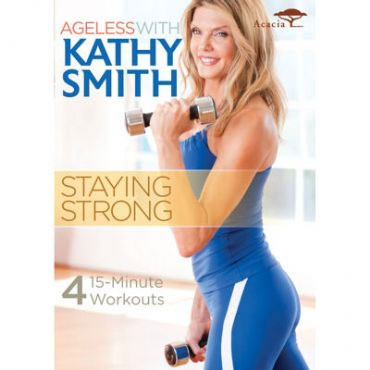
DVD Review: Kathy Smith's 'Staying Strong'
The DVD Ageless with Kathy Smith: Staying Strong is Kathy's response to dealing with the physical issues that women begin to experience as they head into the menopausal and post-menopausal years. The DVD targets strength-building to help women gain muscle and bone mass, and includes four 15-minute routines that are a quick and fun way to improve fitness.
The first 15-minute segment focuses on arm strength. Kathy hits all arm muscles with her exercises, and provides modifications as she goes through the routine. Kathy is known for her great cueing and frequent coaching on maintaining proper form. She's also a motivating instructor and projects lots of energy-something that can be helpful when you're struggling through those last few repetitions.
Posted 2/21/2012 10:00:00 AM By: : 7 comments 16,735 views

In Post-Menopausal Women, 'the Sunshine Vitamin' is One to Watch
Vitamin D is a hot topic in nutrition, and one that's become a focus in menopausal bone health. There are two forms of the vitamin, D2 and D3 (cholecalciferol), with D3 the form best metabolized by the body. Vitamin D is found in foods such as fish, eggs, fortified milk and the old remedy, cod liver oil.
Although this nutrient is found in foods, the greatest source for obtaining vitamin D is through the skin. When bare skin is exposed to ultraviolet light, it synthesizes vitamin D3 that is then stored in the liver. You only need 10-15 minutes of sun exposure during peak sun hours (between 10 a.m. and 2 p.m. in most locations) during the summer months to produce up to 10,000 IUs of the nutrient. After that short exposure you can continue with safe sun habits and slather on a broad-spectrum sunscreen.
How much vitamin D do you need? According to SparkPeople's resident dietitian, Becky Hand: In the last few years, many experts and health organizations urged the Institute of Medicine to revisit the DRI set for vitamin D and re-evaluate the latest research. After a thorough review, the recommendations for vitamin D did go up by two or threefold in some age groups. The current Recommended Dietary Allowance for vitamin D (as of November 2010) is:
- Ages 1-70: 600 IU (International Units) daily
- Ages 71 and older: 800 IU daily
- Tolerable Upper Intake Level: ages 9 and up: 4000 IU daily
Read more: How to Get Your Daily Dose of Vitamin D
Current research on vitamin D and its role in health suggests that there may be a correlation between low blood levels of this nutrient and the development of diseases such as osteoporosis, some cancers, diabetes, cardiovascular disease, hypertension and even obesity and depression. There are estimates that up to one half of all Americans are deficient in this vitamin, with an increased risk of deficiency in people who have one or more of these risk factors:
Posted 1/25/2012 10:00:00 AM By: : 38 comments 29,368 views

The Secret to Not Letting the Holidays Overwhelm You? Have a Plan!
We're in the thick of the holiday season, and for many women it can be a time when the mainstays of our healthy habits take a back seat to preparations for seasonal celebrations. For those who struggle with weight issues, the holidays can be a minefield of cookies, festive meals and lots and lots of favorite treats. In addition, stressful pace of this season can derail the most faithful of exercisers, and add snow, ice and cold to the mix and you have even more fitness dropouts.
So what's a gal to do? The first and most important step is to start now with a contingency plan for keeping your diet healthy and your fitness routine alive by proactively having positive alternatives to the usual things that sideline your good habits this time of year.
Most people have several holiday parties that provide a tempting array of fatty appetizers and desserts. You can take part in those events, enjoy the food and not overindulge if you just think ahead and make a plan for negotiating the holiday fare. I've found the following tips can make a big difference in how well your maneuver through the holiday eating season.
Posted 12/7/2011 6:00:00 AM By: : 21 comments 17,845 views
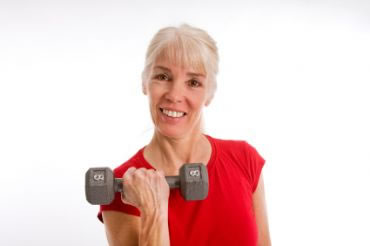
Muscle Your Way to Stronger Bones
One of the most concerning physical changes that occurs in postmenopausal women is an accelerated loss in bone mineral density within the first several years after menopause. The rate of postmenopausal bone loss can vary for each woman, and factors such as her bone mineral density prior to menopause, diet, exercise level and genetics all influence her rate of bone loss.
All types of exercise are great for your health, but to build strong bones, weight-bearing exercises like running, stair climbing, walking and strength training are increasingly shown to help prevent bone loss in postmenopausal women.
Recent studies have found that combining weight bearing exercises like walking or running or even jump roping with higher-intensity, lower-repetition strength training three times a week was more beneficial for bone mineral density (bone mineral density) than just doing the cardio exercise alone.
One of the key findings from bone mineral density research is that only the areas of the body that are loaded by the force of muscle movement are stimulated to rebuild and increase in bone mineral density. For example, if you're a postmenopausal runner who doesn't do any upper body strength training, you may have bone loss in the bones of your upper body. Just like the saying about tooth health and flossing, “only floss the teeth you want to save” you need to think about your whole skeletal system when developing an exercise program, and include exercises that'll target your entire body.
What helps maintain and even increase bone mineral density in postmenopausal women?
Posted 10/31/2011 6:00:00 PM By: : 11 comments 17,247 views
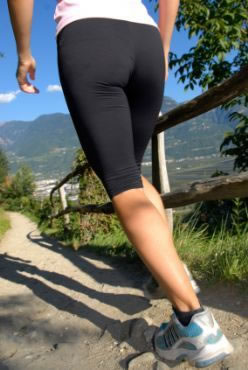
How Strong Are Your Bones?
One of the most serious problems associated with menopause is the increased risk of bone loss as a result of hormonal shifts. This is the first of series of four blogs I'll be writing on bone health, and in this blog I'll cover information on osteoporosis risk factors and diagnostic measures for determining bone density.
It's important for women to understand what their risk of osteoporosis is, and the ways they can reduce their chances of a bone fracture later in life. Most women don't think about their bone strength the same way they think about muscle strength. We can see our muscles become more defined with use or atrophied when an injury immobilizes a limb. In contrast, our bones are hidden and we don't worry about their strength until a fracture from weak bone structure occurs. Like our muscles, our bones are constantly being broken down and rebuilt. The degree of building for both muscle and bone is dependent on several factors such as nutrition, stress/ stimuli effect (ie., how weight training stresses the muscles in a positive way that stimulates stronger rebuilding of tissue) and genetics.
The breakdown and rebuilding of bone is a necessary part of keeping bone strong, but when either part of the process slows, bones can become weakened. Bones are composed of a hard outer layer, called the cortical bone, and the inner, honeycombed like portion called the trabecular bone. The outer portion provides the bone structure, but it's the inner portion that provides the majority of a bone's strength. As we age, the ability of our bones to maintain mass and normal structure is reduced as bone starts to be reabsorbed faster than it can be laid down.
The continued net loss can cause bones to lose their strength and increase the risk of fracture. We all start losing bone mass after 30 years of age, but whether the bone loss leads to fracture risk depends on a variety of influences. For example, a woman that starts out with thicker bones will not develop menopause related weakness as quickly as women who didn't get enough bone building nutrients in their formative bone-building years.
After menopause there is an acceleration of bone loss, so it's important for women to get a baseline assessment of their bone mass when they reach menopause. There are several tests used to measure bone mineral density (BMD), but the most accurate test is dual-energy X-ray absorptiometry (DEXA). It uses a very low level X-ray to detect bone mineral levels and can diagnose whether a person has osteopenia (a precursor to osteoporosis) or osteoporosis. The earlier osteopenia or osteoporosis is diagnosed, the better your chances are of slowing bone loss through lifestyle changes and medication. Many healthcare providers are suggesting that their female patients have the DEXA test done earlier than the prior guideline of 65 years, as by that age the degree of bone loss can be substantial.
Along with having a DEXA scan, you can see if you are at risk of bone weakness by determining whether you have risk factors associated with increased bone loss. The following are risk factors that can be reduced with lifestyle changes:
Posted 9/21/2011 10:00:00 AM By: : 22 comments 20,260 views
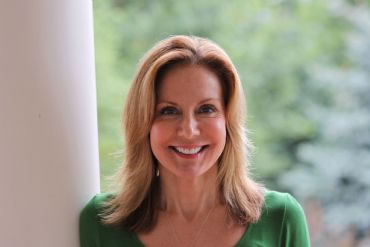
Keep That Youthful Glow during Menopause and Beyond
Editor's Note: Cathy Cram, M.S., is the resident maternal fitness expert on our sister site, BabyFit.com. She writes a monthly series on menopause health and fitness.
One of the most visible changes you may notice during the menopausal period is the look of your skin. What may start out as a subtle increase in fine lines and dryness can quickly accelerate as estrogen wanes to crepey, uneven texture and deep wrinkles. Although the aging process plays a role in skin changes, the hormonal shifts of menopause hastens the appearance of pigmented and wrinkled skin, especially in women who smoke, eat a poor diet and are sedentary. The good news is you can improve the health and appearance of your skin by making some positive lifestyle changes and adding a few “silver bullets” to your skincare routine.
The leading causes of poor skin health are:
- Smoking
- Chronic alcohol use
- Rollercoaster weight gain/loss
- Poor diet
- Sedentary lifestyle
- Sun exposure
Posted 8/17/2011 10:00:00 AM By: : 59 comments 78,226 views
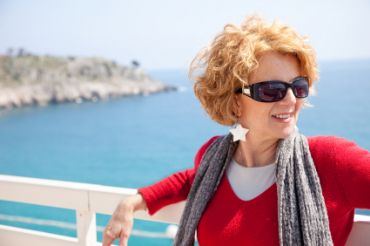
10 Reasons to Celebrate Menopause
Editor's Note: Cathy Cram, M.S., is the resident maternal fitness expert on our sister site, BabyFit.com. She writes a monthly series on menopause health and fitness.
My past menopause blogs have dealt with some of the less than pleasant changes that occur during and after menopause, so for this blog I want to cover some of the positive changes that come with this life change. It's summertime, so it feels appropriate to lighten things up and look at things with a "glass half-full" attitude.
For most women, menopause not only results in freedom from monthly menstrual periods and birth control, but also coincides with major life changes. Children are nearing adulthood or are already launched, and our relationships with spouse, partner and family begin to shift as the nurturing hormones wane.
Your attitude about these changes can play a strong role in how well you navigate the rest of your life. Shifting from being full-time mom to the parent of near adults can result in an identity crisis, but instead of spending precious time mourning this change, think instead of how much energy you'll now have to nurture your dreams. After years of having your children's needs come first it can take time to adjust to having more time to yourself. The quiet you may have dreamed about when in the thick of childrearing may feel disconcerting, but try to avoid filling the void too quickly. Discomfort can be an effective catalyst for making positive life changes if you allow yourself time to sit with it, and think about what actions will provide long-term emotional sustenance.
For those of you who never had children (I'm in that group), menopause can cause you to mourn the loss of choice regarding parenthood. On the other hand, you can close that door and open others that allow you to make your mark in the world and form meaningful, enriching relationships. You have value and worth outside of reproduction, so don't let anyone make you feel less of a woman because you don't have children. Think of the people in your life who had a positive influence on your development, such as aunts, teachers and mentors. As the saying goes, "it takes a village" and your life experiences offer a perspective that can enrich a child's life.
The years after menopause can be the most fulfilling of your life, as long as you continue to view yourself as a strong, vital person. Maintaining a fitness routine will help immensely with your self-esteem, as will surrounding yourself with people who have a positive attitude. If you don't have a strong circle of women friends, think about ways you can form new friendships or rekindle old ones. The emotional and physical benefits of spending time with good friends becomes more important as you transition into midlife.
One consistent factor that researchers find when studying women and mental health is the power of female friendships. I know in my life, my girlfriends have been a constant source of strength, laughter and comfort. They've been with me through marriage, divorce, and a parade of dating debacles, always ready to shore me up when I'm down and gather the wagons during illness or other difficult times. Within my group of friends, I know that I'll never lack for a simpatico ear to regale with my latest indignity of aging or mental acuity lapse.
I hope that as you head into the menopause years you'll strive to cultivate good friends, keep yourself fit and healthy and laugh every day. In addition, if you have a bad day of hot flashes, read through this list--hopefully it'll help you keep it all in perspective!
Posted 7/13/2011 2:00:00 PM By: : 64 comments 39,014 views




